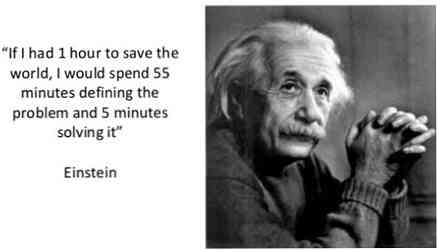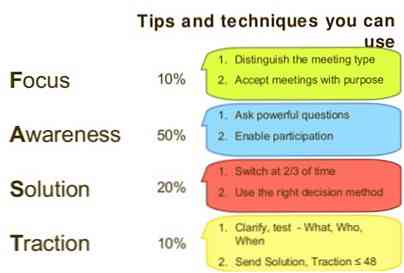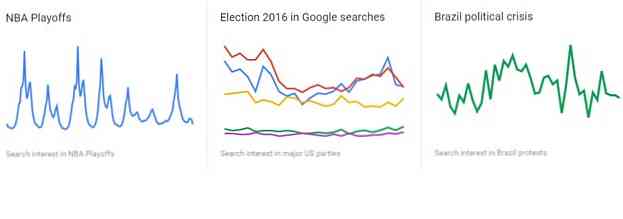How to Organize Webinars to Generate Leads
Webinars are a great way to generate leads and smart companies are already using this strategy to get more customers. Whenever a webinar is started, the participants need to enter their name and email address. This allows you to gain a lead for every participant that is a part of your webinar.
But while it looks easy to host a webinar, in reality, it takes a hefty amount of work before you would actually start seeing results.
8 Reasons to Host a Webinar
- It is a great way to interact with your existing and potential customers thereby establishing stronger connections.
- It allows the customers to know more about your brand helping to establish more trust and authority.
- People who register for your webinar have already moved a step further in the sales funnel. Converting them becomes easy as one-to-one interaction is possible.
- Content from your webinar can be recycled as blog posts thereby adding more value to your overall content marketing efforts.
- Webinars are free so it gives just one of the best reasons to sign up. People signing up for webinar are added in your new list of customers whom you can market easily.
- You are able to target any location as webinars don't have any geographical barriers.
- It allows you to recruit more guest presenters enabling you to make valuable connections.
- You can record your webinars and use the video to remarket yourself. This will help your audience to analyze your content as thoroughly as possible.
How to Organize Your First Webinar
Step 1 - Set an agenda for the Webinar
You will feel embarrassed if during the webinar, the participants lack interest and start doing other things that indicate boredom. To prevent this, you will need to create a working agenda that doesn't overwhelm or underwhelm your audience.
To do this, you need to:
- Know your audience and prepare a webinar that is based on the likes of the people.
- Define the problem because if the audiences are unaware of the problem they won't be interested in finding solutions for it.

- Have a plan for pauses during the webinar. Many times, long silences force people to lose attention so have a plan ready for these long silences so that the audiences don't lose interest.
- Set clear expectations as to what needs to be before and during the meeting.
- Ask for input from team members and choose topics that generate curiosity and discussion.
- Have a set of questions to ask during the webinar.
- Have a set of advice and tips to share during the webinar.
- Start on time. Nobody likes to wait!
- Apply the 4 natural stages of FAST framework for an effective meeting that are - Focus, Awareness, Solution and Traction.

Step 2 - Determine the format of your webinar
It can be interview style, single speaker, panel discussion type or interactive where participants receive a deeper understanding of the topic through facilitated conversations.
In general, there are 4 categories of meetings as defined below:
- Decide: Where decisions are made.
- Consult: Where ideas are shared and a mutual discussion is carried out.
- Inform: These are single speaker meetings where one way downloads are carried out.
- Relate: Carried out to know others and increase branding and trust.
As per the determined format, note down the features that you will need before, during or after the webinar.
Some questions to ask yourself are:
- Do you need to deliver a presentation or demonstrate a how-to tutorial?
- Do you require screen sharing allowing the participants to take control of their desktop?
- Do you want to record your webinar?
- Do you want a live video feed of the speakers?
- Do you want to customize the meeting room using your logo and custom graphics?
- Do you want a moderated chat and Q&A session?
Whatever be the needs, choose a tool wisely and as per your own specific requirements. Also keep in mind the size of your audience: free tools allow as low as 15 or 20 participants while enterprise-level packages allow as up to 1,000 participants per webinar. A couple of good options to choose from like Clickmeeting, Join.me or Adobe Connect. You can simply choose the one you consider to be the best.
Step 3 - Create a high quality landing page
A good landing page will decide the strength of your participants. Every landing page should have 9 main elements:
- Headline - This should be your best shot. Provide a catchy headline that instantly grabs the attention of your audience.
- A secondary headline - Excite the customer to read more.
- USP - Why are you better than the others and why should people attend your webinar?
- Testimonials - These work really well in converting people so use them smartly.
- Call to Action text - Make it convincing and easy to scan through.
- Call to Action button - Use appropriate colors to distinguish your CTA button with other text and images.
- Links to social proof - Some more links to social proof that increase trust.
- Hero shot - Who are the presenters and what experience do they hold? You can add image or videos.
- More information - Don't leave any information and provide as much as data for the reader so that he is able to clearly make his decision.

Apart from the above 9 must-have elements, here are some more tips that you can use effectively:
- The landing page should serve a clear purpose. Remember, an impression is formed in 1/20th of a second so if you miss the chance to impress the audience, they might leave sooner.
- Addition of videos on landing pages have been known to have increased conversion rates by up to 80%. In the Unbounce example above, you can add video testimonials in place of text ones. Visual attractiveness helps people to make quicker decisions.
- A/B test your landing page for better CTA and text copies. Some brands prefer long text while some have shorter text. Whichever works best needs to be decided by results of A/B testing and not by HIPPO (Highly Paid Persons Opinion).
- Solve a problem and don't try to oversell your product/service.
- Use Google trends to find out popular keywords relevant to your target industry and try to build your landing page focused on this area.
- Come up with persuasive titles, subject lines, and calls to action.
- Look into core values and emotions when creating a design. Try to determine the emotional makeup of your persona.

IMAGE: Unbounce - Clearly state the time of your webinar on the landing page.

Getresponse landing page creator has some great options to build landing pages that easily converts.
Step 4 - Invite participants
Believe me, this is the most fun part! Build up a list of email id's to target as per the user persona. Email is the simplest yet most effective channel of promoting webinars. Send dedicated emails to the intended participants for every individual webinar.
(4.1) Your webinar invitation email should have the following points:
- WHAT: The title of the webinar
- WHEN: The Date and time of the webinar
- WHO: Who are the presenters?
- HOW: The CTA part with proper and working links for registration
- WHY: The problem solving part that will persuade the user to register for the webinar
- WHAT: What will the people learn from it
Here's an example from Litmus that has all the components of an effective webinar email copy.

(4.2) Send webinar reminder as people often have the habit of registering via a reminder email.
(4.3) You can use a combination of person's name, person's name + brand name or brand name + webinar in the headline of the email. The best option is to A/B test them.
(4.4) Use hashtags to promote your webinar. You can ask the participants to post questions in order to start a discussion and form a community on social media. This really works to provide a heavy weightage across social channels for your webinar.
Step 5 - Schedule your webinar
It is important to host the webinar based on the time zones of your participants. Hence, the first step is to study the participants and their geolocation before running a webinar. Here are some pointers you should keep at the back of your head when planning to schedule your webinar:
- Choose the right day of the week and the right time of the day as per the audience time zones.
- Based on research, the the midday or afternoons of Tuesdays, Wednesdays and Thursdays are the most popular times to organize meetings.
- Don't get too excited to talk to so many people and ensure that you record the entire webinar. A recorded webinar can be easily used to upload on YouTube or other video sharing websites to be viewed by other audiences who weren't able to be a part of actual webinar.
Ensure that you have a backup plan in case you might need technical fixes. Your webinar is a platform to show your passion. The right preparation before the webinar and effective promotion and feedback from the participants after the webinar should be done for a dream webinar that helps to generate astounding leads for your business.
(Cover photo via Freepik)






